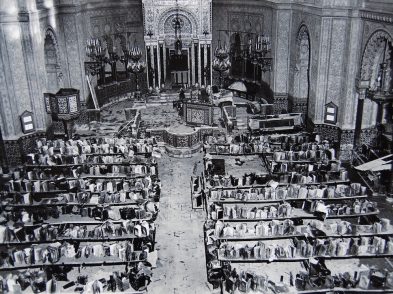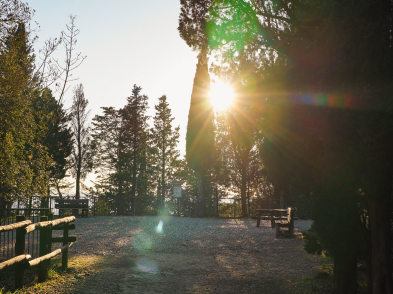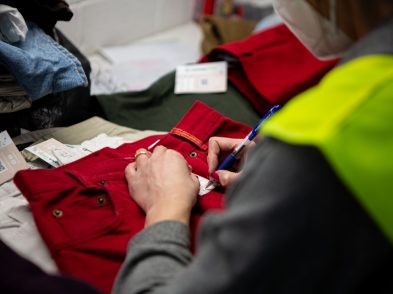At the corner of Piazza Duomo and via dei Calzaiuoli is a small loggia that played a big part in Florentine civic history. In the shade of the bell tower, behind malodorous horses and carriages, until recently, few tourists or residents stopped to consider it. Now, the loggia and museum of the Bigallo is once again in the public eye: a new tourist information office has opened in this space.
The principal function of this office is the orientation of lost or confused tourists; they are the modern version of the pilgrims who once took advantage of the charitable services offered by the two confraternities whose headquarters this was-the Misericordia and the Bigallo. Closed for restoration for the past two years, and before that rarely open, the small Museum of the Bigallo is now open regularly, prompting us to reflect upon the history of this building and its institutions.
The modern visitor to the Museum of the Bigallo will see three small rooms, one of which is occupied by the tourist information desk. In these rooms is housed a small collection of devotional works and documents from the thirteenth to sixteenth centuries. This, admittedly, does not make for a spectacular museum display, but it becomes interesting if we know the history of the space.
Imagine a city without a child protection agency, without hostels and tourist services for all budgets, without ambulances and services for the sick, the dying and the dead. In the Middle Ages, before the confraternities of the Bigallo and Misericordia came into being, that was Florence. These voluntary associations of laymen mixed religious with civic duties and were an important part of Florentine life throughout the early modern period. Confraternities, generally funded by private donations and revenue from properties, were run by an elected board but subject to some control by the Florentine Republic.
Legend has it that both the Bigallo and the Misericordia were founded by Saint Peter Martyr in 1244. The Compagnia Maggiore di Santa Maria was in charge of taking in pilgrims and had 12 hospices for this function, the most important of which was called the Bigallo, the name that was soon appended to the confraternity’s. The wealthier Compagnia di Santa Maria della Misericordia took in abandoned children, cared for the sick (which it still does today: they run the city’s ambulance service), and buried the dead, a role that was sadly essential during the Black Plague of 1348. Donations of money and property after that date allowed the Misericordia to expand upon a small piece of property it had near piazza Duomo; the loggia that still stands here was begun in 1352, when the Duomo was still under construction. Inside was an oratory and meeting rooms, while upstairs was lodging for orphans. The building is now known as the Bigallo because Cosimo de’ Medici, who was one of the captains of that confraternity, merged the Bigallo and Misericordia in 1425. A century later, the two separated and the Misericordia moved to the nearby building where you now see ambulances parked outside.
A touching fresco from 1386 on the outer wall of the confraternal building publicized the Misericordia’s dedication to abandoned children, a role that only 50 years later would be taken over by the Ospedale degli Innocenti. Detached in 1777 and now inside the museum, the painting depicts the captains of the Misericordia inside their loggia, solemnly handing over orphan boys into the loving arms of waiting patrician women-a highly idealized representation of the confraternity’s actual role of giving unwanted babies to paid wet-nurses or surrogate families in the countryside.
From the same period is a frescoed Allegory of Mercy that is famous for the thirteenth-century view of Florence at the figure’s feet, possibly the earliest image of the city. The allegorical figure with her hands clasped in prayer is looked upon by devoted members of the confraternity of the Misericordia (twhich means ‘mercy’). Roundels on her cloak visually explicate the duties of the confraternity while words written on either side spell it out: ‘visit the sick and abandoned, give them food and drink, save prisoners, offer a roof to those without.’
It is not a coincidence that at Mercy’s feet is the image of the city of Florence, her protection made visible in the form of confraternal members. The location of this fresco reinforces the importance of the Bigallo and completes an interpretation of the whole of piazza Duomo as not only the religious heart of the city, but as a civic space as well, one that depends on the generous hearts of its residents.
The Bigallo Museum is free until December 31, 2011 Open Monday through Saturday, 10:30am-4:30pm; Sundays and holidays, 9:30am-12:30pm. Entry is every half hour upon reservation at 055/288496.







